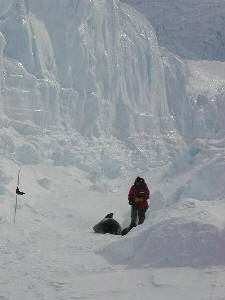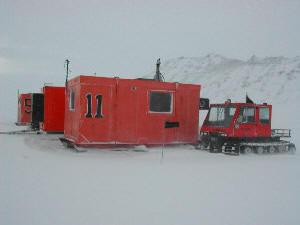Project Description and Data for Papers


The Ross Sea, a geographically well-defined embayment of the Antarctic continental shelf, provides an outstanding scientific opportunity in the Southern Ocean for gaining insights into marine ecosystem processes due to its unique combination of attributes. Of note, the Ross Sea is one of the most pristine marine systems on the planet. An intensive study of a breeding population of Weddell seals in the Erebus Bay region of eastern McMurdo Sound at the southern extent of the Ross Sea was initiated in 1968. The study of the population represents one of the longest continuous field investigations of a long-lived mammal in existence. Because Weddell seals are large, marine predators, information on the population provides an excellent complement to other studies on other aspects of the marine system (for example, studies of penguins, fish, and marine invertebrates). Further, the long-term data for Weddell seals provide a valuable benchmark for monitoring potential changes in the future. This is especially valuable given interests in potential effects of climate change and possible effects of recently established fishing operations in the area.
The study has tagged more than 28,000 animals and obtained over 306,916 re-sighting
records. Emphasis has consistently been on maintaining and enhancing annual demographic
data through the use of mark-recapture techniques. Because all pups born within the
study area have been tagged since 1973 and because this species
demonstrates strong philopatric behavior, ~80% of the seals are marked and >65% of
the individuals in the population are currently both marked and of known age.
This study and the database accrued through more than four decades of intensive effort provide a strong foundation and unique opportunity to extend our ecological knowledge of population and ecosystem processes. Inferences from this multi-decadal study extend beyond the Ross Sea and contribute to a broader body of knowledge about the evolution of life-history strategies and population dynamics of long-lived organisms in variable environments. Such information is vital to understanding and conserving many other animal populations. In our current project that is funded for July 15, 2022 through July 31, 2027, we continue to build on this foundation as described on the accompanying page.
Data used in papers by Chambert et al. (see below for links to papers)
- Chambert, T., J.J. Rotella, and M.D. Higgs. 2014. Use of posterior predictive checks as an inferential tool for investigating individual heterogeneity in animal population vital rates. Ecology & Evolution 4:1389-1397.
- Chambert, T., J.J. Rotella, M.D. Higgs, and R.A. Garrott. 2013. Individual heterogeneity in reproductive rates and cost of reproduction in a long-lived vertebrate. Ecology and Evolution 3:2047-2060.
If you have questions about the project or seal database, please contact Jay Rotella by e-mail.
